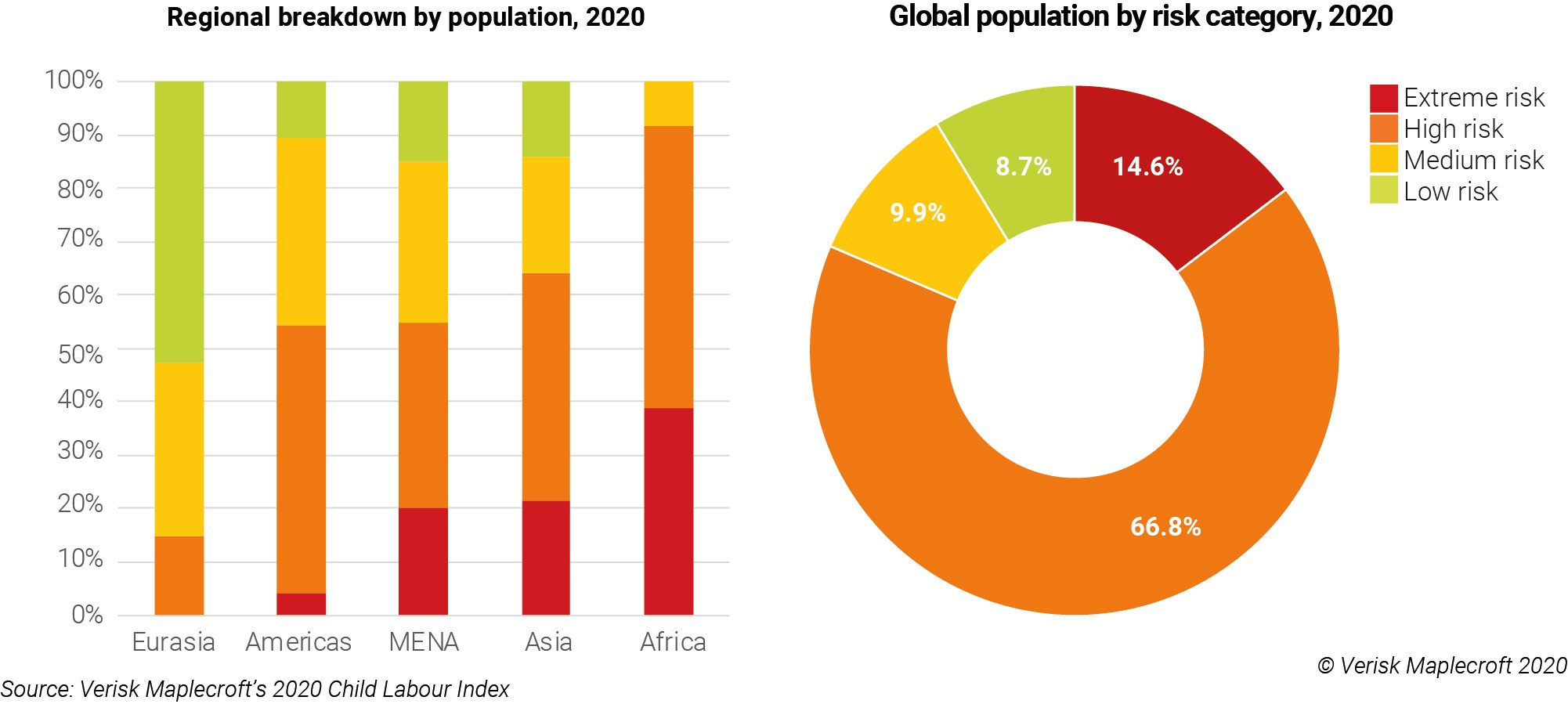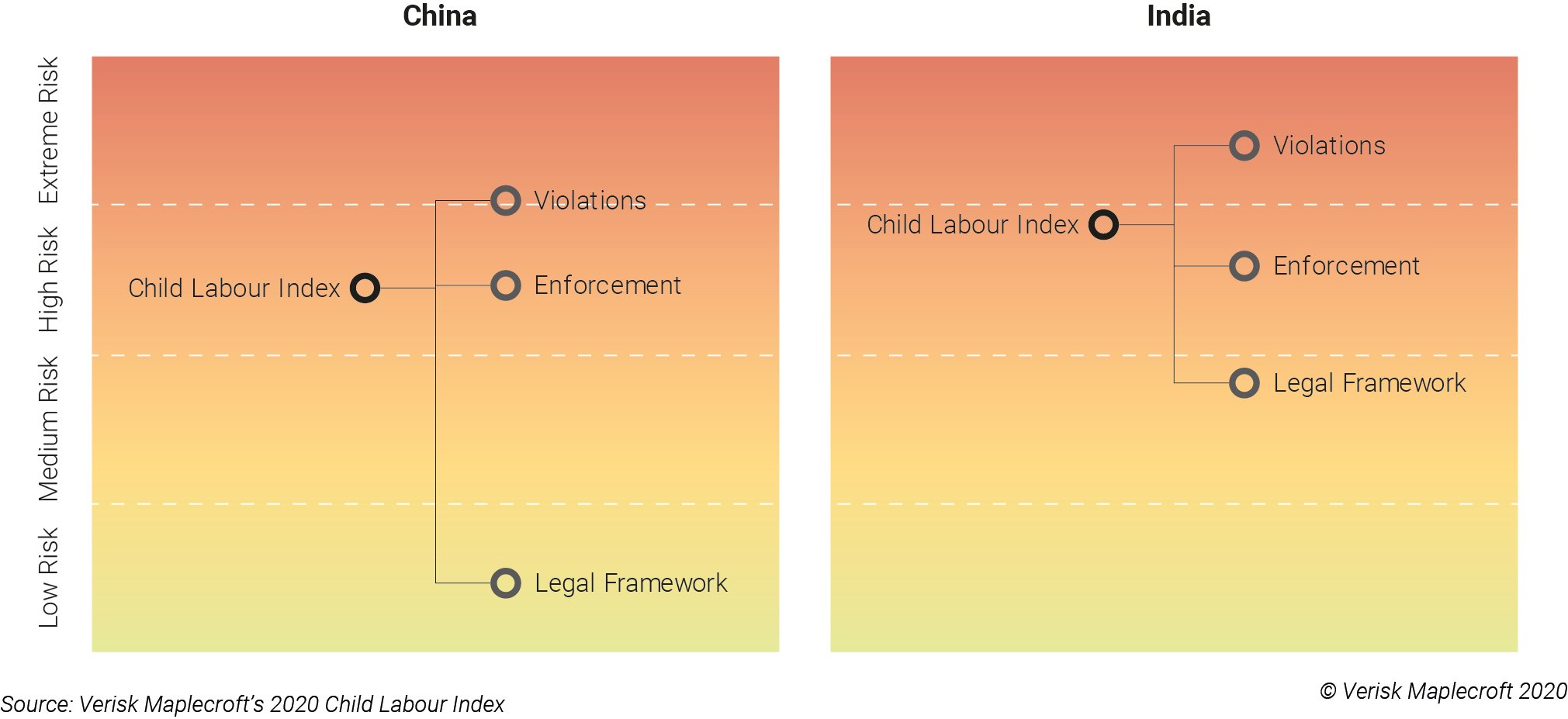Child labour risks increase in 23 countries – forecast to worsen
by Sofia Nazalya and Oscar Larsson,
According to our latest research, 23 countries have shown a significant increase in risk of child labour over the last year, but the issue is set to worsen in other territories over the months ahead as the economic impacts of the coronavirus take hold.
Our latest annual edition of the Child Labour Index, released to coincide with World Day Against Child Labour, measures the risk to business from association with the employment of children in 198 countries.
The significant increase in risk witnessed in over 10% of countries worldwide has also swelled the ‘extreme risk’ category of the index, which has jumped from 27 countries in 2019 to 31 this year, due to the addition of Belize, Myanmar, Guinea and Lebanon.
Over 80% of the world’s population lives in high or extreme risk countries
Africa remains the highest risk region, with 7 of the 10 worst performing countries. However, millions of children worldwide face the prospect of working through their formative years, sometimes in the most hazardous occupations, such as mining, manufacturing and agriculture. From a global perspective over 81% world’s population live in countries with a high or extreme risk of child labour.
The 10 worst performing countries in the Child Labour Index are:
- Somalia
- North Korea
- Eritrea
- South Sudan
- Guinea-Bissau
- Venezuela
- Chad
- Syria
- Mozambique
- Central African Republic
Coronavirus will amplify the risk of child labour in manufacturing hubs
Major manufacturing hubs, including China, India, Bangladesh and Turkey, have also seen a worsening of their scores in the index, while no improvements have been registered in Vietnam and Cambodia.
We believe this negative trajectory will deteriorate even further in the wake of the coronavirus, as unemployment rises and families pushed into poverty. If global declines in manufacturing extend into Q3 and Q4 this year, there are heightened risks of increasing numbers of children entering the workforce. Families will be left with little choice but to send their children to work to make ends meet.
The downward trend is not new though. Progress was already stalled in these countries prior to the outbreak, despite economic growth and improvements on poverty and education. Turkey, India, Bangladesh and Vietnam have all seen their index scores drop over the last four years, providing a clear red flag for companies sourcing goods from these countries’ manufacturing sectors.
In the world’s largest manufacturing hubs – India and China –our Industry Risk data identifies agriculture, apparel, manufacturing, construction, mining, hospitality, services and the food production industries as posing high levels of risk in both countries. While both sit in the high-risk category for in the Child Labour Index they are considered extreme-risk in terms of the number and severity of violations.
Given the constraints on the ability of companies to carry out audits due to the coronavirus, it is going to prove increasingly difficult to police suppliers and ensure more children are not used in the manufacturing of goods and raw materials. The reputational risks to brands are, therefore, at a higher level than at any other time over recent years.


